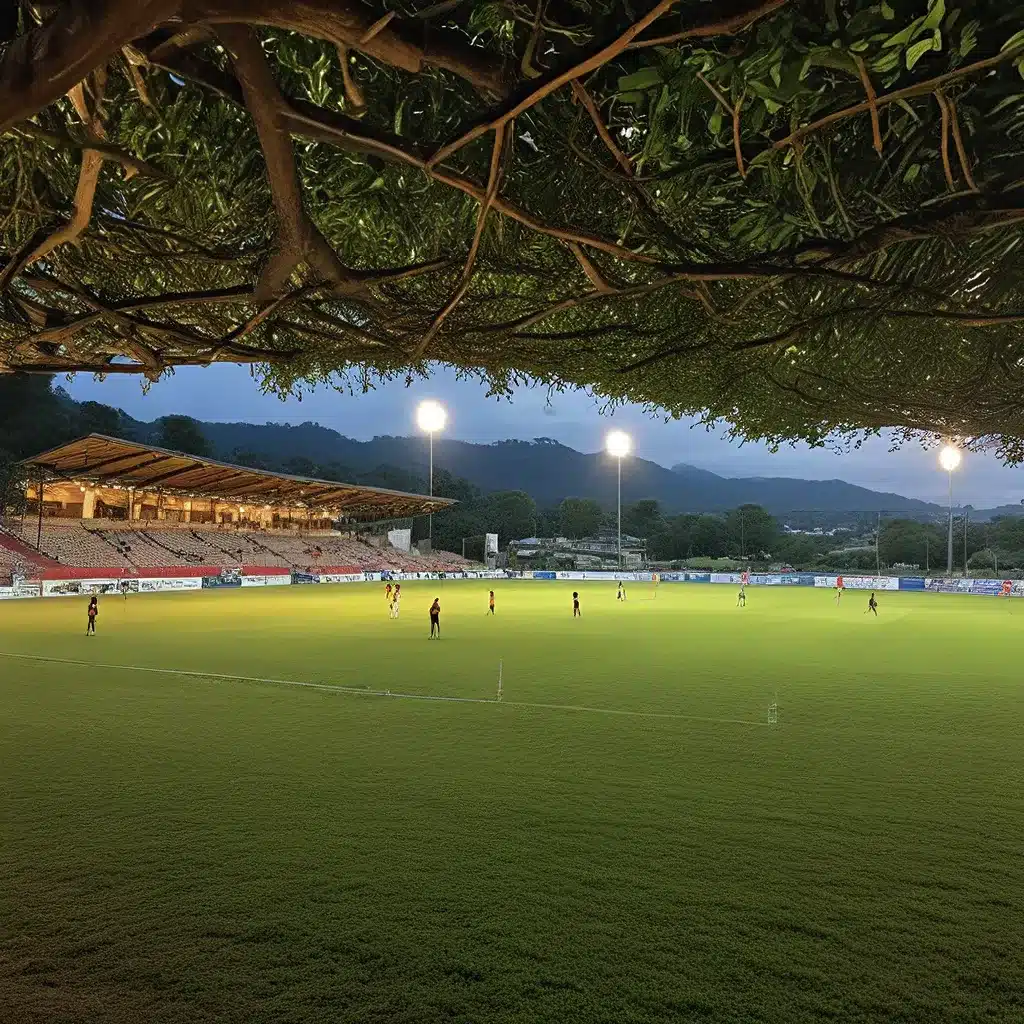
A Storied History Steeped in Tradition
The Singhalese Sports Club (SSC) Ground in Colombo, Sri Lanka is a cricket stadium with a rich history that stretches back over a century. Nestled in the heart of the bustling city, this iconic venue has witnessed some of the most pivotal moments in Sri Lankan cricket, serving as a stage for the country’s rise to prominence on the global stage.
The origins of the SSC Ground can be traced to the late 19th century, when the sport of cricket was first introduced to Sri Lanka (then known as Ceylon) by British colonial administrators and tea planters. As the game gained popularity among the island’s elite, the need for dedicated cricketing facilities became evident. In 1889, the Singhalese Sports Club was founded, with the aim of promoting cricket and other sporting activities.
The club’s first home ground was established in the Slave Island area of Colombo, but as the city grew and developed, the need for a larger, more modern facility became apparent. In 1922, the club relocated to its current site in the Maitland Place neighborhood, where the Singhalese Sports Club Ground was constructed. The new stadium, with its expansive playing field and state-of-the-art amenities, quickly established itself as the premier cricketing venue in the country.
Witnessing Sri Lanka’s Cricketing Transformation
The SSC Ground has played a pivotal role in the evolution of Sri Lankan cricket. Before the country gained full Test status in 1981, the stadium was the primary venue for domestic cricket matches and international tours. It was here that a generation of talented Sri Lankan cricketers honed their skills, laying the foundation for the team’s future success.
The stadium’s importance was further cemented in the late 1980s and early 1990s, as Sri Lanka’s cricket team began to emerge as a force to be reckoned with on the international stage. Under the captaincy of Arjuna Ranatunga, the team adopted a more aggressive and innovative style of play, which captivated audiences both at home and abroad. The SSC Ground became a symbol of this transformation, as it witnessed the rise of legendary players like Sanath Jayasuriya, Muttiah Muralitharan, and Aravinda de Silva, who would go on to shape the country’s cricketing fortunes.
The 1996 World Cup Victory and Its Lasting Impact
The 1996 Cricket World Cup marked a watershed moment in Sri Lankan cricket history, and the SSC Ground played a crucial role in this momentous achievement. As the team’s home venue, the stadium hosted several key matches during the tournament, including the crucial semi-final clash against the heavily favored Indians.
The Sri Lankans’ triumph in the final, which saw them defeat the mighty Australians, was a triumph not just for the team, but for the entire nation. The victory united Sri Lankans of all backgrounds, transcending ethnic and religious divides, and cemented cricket’s status as the country’s de facto national sport.
The impact of the 1996 World Cup victory was far-reaching. It transformed the perception of Sri Lankan cricket both at home and abroad, transforming the team from underdogs to world champions. The success also had a profound economic impact, as the influx of television and sponsorship revenue allowed the sport to become a viable professional pursuit for the country’s top players.
Adapting to the Modern Era
In the decades since the 1996 triumph, the SSC Ground has continued to evolve to meet the changing demands of the game. Upgrades and renovations have been undertaken to improve the spectator experience, including the installation of modern floodlighting systems, upgraded seating, and enhanced media facilities.
The stadium has also played host to a number of significant international matches, including Test matches, One-Day Internationals, and T20 Internationals. It has witnessed some of the most memorable performances in Sri Lankan cricket history, from Muttiah Muralitharan’s record-breaking exploits to the heroics of modern-day stars like Kumar Sangakkara and Mahela Jayawardene.
Despite these changes, the SSC Ground has retained its unique character and charm. The lush green outfield, the iconic pavilion, and the passionate local supporters all contribute to the stadium’s enduring appeal, making it a cherished destination for cricketers and fans alike.
A Beacon of Hope and Unity
The Singhalese Sports Club Ground has not only been a testament to Sri Lanka’s cricketing prowess, but also a symbol of the country’s resilience and unity. During periods of civil unrest and natural disasters, the stadium has served as a beacon of hope, providing a shared space for Sri Lankans to come together and find solace in the game they love.
In the aftermath of the devastating 2004 Indian Ocean tsunami, the SSC Ground was transformed into a hub for relief efforts, with the Sri Lankan cricketers leading the charge to provide aid and support to affected communities. Similarly, during the country’s protracted civil war, the stadium remained a place of respite, where the national team’s achievements on the field helped to unite a divided nation.
As Sri Lanka looks to the future, the Singhalese Sports Club Ground remains a crucial part of the country’s sporting and cultural landscape. It continues to inspire generations of young cricketers, serving as a symbol of national pride and a testament to the transformative power of the sport.
In a world increasingly defined by division and uncertainty, the SSC Ground stands as a reminder that sport has the unique ability to bring people together, transcending barriers and fostering a sense of shared identity. It is a place where the spirit of cricket – embodied in the values of sportsmanship, unity, and resilience – is celebrated, reminding all who visit of the profound impact that a single venue can have on a nation’s collective consciousness.
Explore more captivating stadiums and their stories on Old Stadium Journey.

